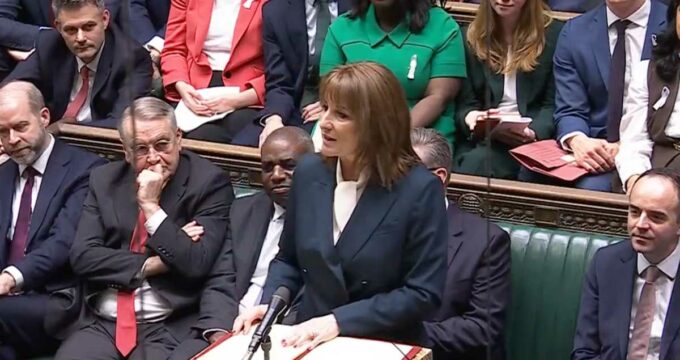Australian unis brace for risk assessment as visa rejections continue
- Australian education providers are grappling with historically high visa rejection rates over the last two quarters
- Visa rejection rates are heavily weighted in the Australian government’s assessment of risk level for each institution
- The next risk assessment will occur in March 2024, and the expectation is that more providers will be reset to a higher risk level as a result
Australia’s education providers continue to grapple with a significant spike in visa rejections. As many as 1 in 5 international students had their visa applications rejected in the last two quarters of 2023, with rejection rates trending even higher for students from key South Asian sending markets such as India, Pakistan, and Nepal.
Over the same time frame, visa grants for the ELICOS sector were down by a third or more, marking the highest rejection rates recorded over the last two decades.
Education providers in all sectors have raised the alarm over those rising rejection rates, but also over a lack of transparency in visa processing under Australia's new migration settings. The end result is considerable confusion and frustration for institutions, agents, and students alike.
In a recent open letter to Ministers Claire O’Neil from Home Affairs and Jason Clare from Education, 16 Vice Chancellors warned that that confusion and disruption in visa processing could cost the 16 signatory universities a combined AUS$310 million.
"Given the ongoing recovery from the impacts of COVID-19, this situation is particularly alarming,” said the Vice Chancellors. “The 16 institutions endorsing this letter conservatively estimate a collective revenue downturn of approximately AUS$310 million in 2024 alone, akin to the impact of the pandemic.”
Speaking to The Sydney Morning Herald, CQ University Vice Chancellor Nick Klomp said that good universities were being "caught in the crossfire" of the new migration settings. “The situation is now urgent, he added. "With university semesters about to commence and thousands of genuine student visa applications – and an AUS$29 billion export industry – hanging in the balance."
Risk levels will reset in March
The Australian government is somewhat more transparent with respect to the risk levels that are assessed for Australian institutions. The Department of Home Affairs (DHA) relies on a system in which institutions are categorised into one of three "evidence levels", where Level 1 is least risk, Level 2 is medium risk, and Level 3 is high risk, and where "risk" refers to the likelihood of accepting non-genuine students based on (recent) historical data.
DHA explains, "The evidence level of the education provider for the 12-month period (ending 31 December) will be used to determine the education provider’s evidence level in the following March. Similarly, the evidence level for the 12-month period (ending 30 June) will determine the education provider’s evidence level in the following September." In other words, those evidence levels (risk levels) are reset twice a year, and the next assessment will happen in March 2024.
The evidence level assessed to each institution bears on the visa processing time and rejection rates that will result for student applicants. And, with that in mind, some Australian providers have recently suspended student applications and/or rescinded admissions offers for students from countries with higher rejection rates. Others have also reportedly suspended applications from onshore applicants already in Australia on temporary visas.
Those extreme measures make more sense when we consider that the evidence level assessed to each institution relies on an established formula that weighs out the following factors:
- rate of visa cancellations (25% weighting)
- rate of refusals due to a fraud reason (40% weighting)
- rate of refusals (excluding fraud) (10% weighting)
- rate of student visa holders becoming unlawful non-citizens (15% weighting)
- rate of Subsequent Protection Visa applications (10% weighting)
Institutions sliding to higher risk ratings
Times Higher Education reports that more Australian universities slid into that Level 2 risk setting "after the former government’s removal of international students’ working restrictions, resulting in an employment-fuelled boom in student visa applications."
The risk setting for a given provider is usually not publicly reported (while it is disclosed to each institution), but recent media reports indicate that of Australia's 40 universities, 24 are currently assessed at Level 1, 15 at Level 2, and 1 at Level 3.
The significance of the upcoming risk assessment in March is that it will be based on the 12-month period ending 31 December 2023, a period that includes at least two quarters where visa rejection rates surged above historical norms. Given the heavy weighting of visa rejection rates in the evidence level formula above, there is a real prospect that more Australian institutions will reset to risk Level 2 or 3, which will in turn pose even greater difficulties for visa processing for applicants to those providers going forward.
The sector appears to be set on a course where a lack of transparency around visa processing is contributing to higher rejection rates, which in turn will lead to a more restrictive risk setting for some providers. “There are more and more really perplexing rejections," said one industry source speaking anonymously to Times Higher Education. "Institutions have invested in much stronger vetting systems, like video interviews with every single applicant, and students that they have a lot of confidence in are still being knocked back. When you’re withdrawing applications en masse because the students are from a particular country, that is a failed system. Frankly, we’d prefer caps. We’d rather have something transparent that we can plan around than the current scenario.”
For additional background, please see:
- "Australia: Visa rejection rates spike as some institutions withdraw admissions offers under new migration settings"
- "Australia: New Migration Strategy ushers in tougher requirements for international students"
- "Australia: Visa approval rates declining for some students as new immigration settings take effect"
















